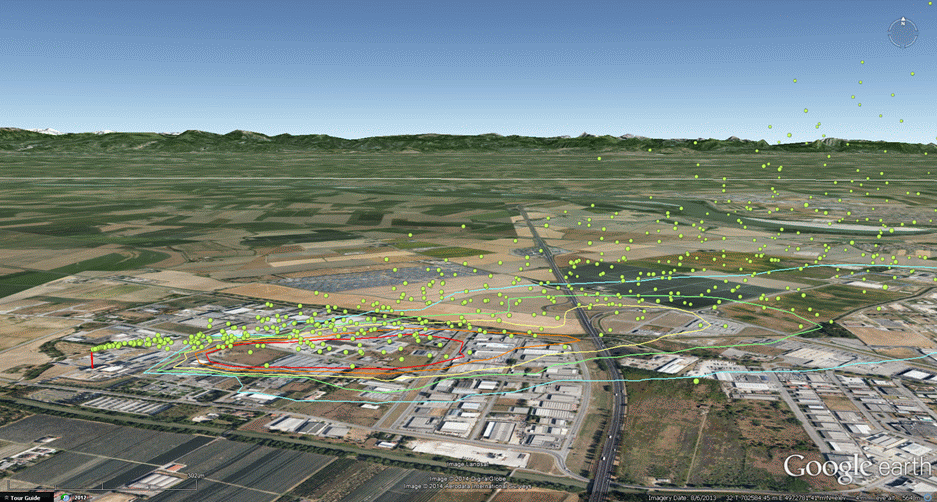Lagrangian particle models
An overview on Lagrangian particle models.There are two main frameworks for modeling air pollution: Eulerian and Lagrangian. Eurlerian models resolve analytically (simple cases) or numerically the conservation equations. Lagrangian models follow the motion of the mass of pollutant in the atmosphere.

Basic concepts
- The mass of pollutant emitted is divided in a given number of computational particles
- Each of these particles moves in the atmospheric fluid with the same velocity of the fluid (i.e. mean wind + turbulent fluctuations of wind)
- the mean field (`u`) is estimated using a meteorological model or from measurements
- the turbulent fluctuations (`u'`) are computed using the Langevin equation with coefficients depending from local atmospheric stability conditions through the PBL scaling variables (`u_star, w_star, L, H`)
- The trajectory of each particle is reconstructed by estimating its position at discrete time intervals
- The concentration in a given point at a given time is computed by summing the contribution of all particles close to the point
The motion of the particles
The trajectory of each particle is calculated with the equation
`x_i (t+Delta t) = x_i (t) + Delta t (u_i + u'_i)`
`u_i` is the mean wind component along the i-th direction and `u'_i` represents the turbulent velocity fluctuation along the same i-th direction
The time evolution of the velocity fluctuation is described by the non-linear Langevin equation
`d u_i = a_i(x,u'_i,t) dt + b_(ij) (x,u'_i,t) d xi_j(t) `
Both `a_i` and `b_(ij)` are linked to the structure of turbulence through functional relations with the meteorological variables.
The calculation of concentrations
The concentration in a given point at a given time is obtained by summing the contribution of all particles close to the point:
`C(x_0,y_0,z_0) = sum_p c_p K_p (x_0,y_0,z_0) `
The concentration associated to each particle (p) is a function of the mass associated to the particle and the relative diffusion of the mass since the release. The K function is a smoothing kernel
Advantages of Lagrangian particle models
Source attribution: each particle belongs to an emitting source
Arbitrary resolution: the mass of pollutant is not distributed in a computational cell. This is particularly important close to the source.
Fast computation: high space resolution does not limit numerical stability and integration time steps